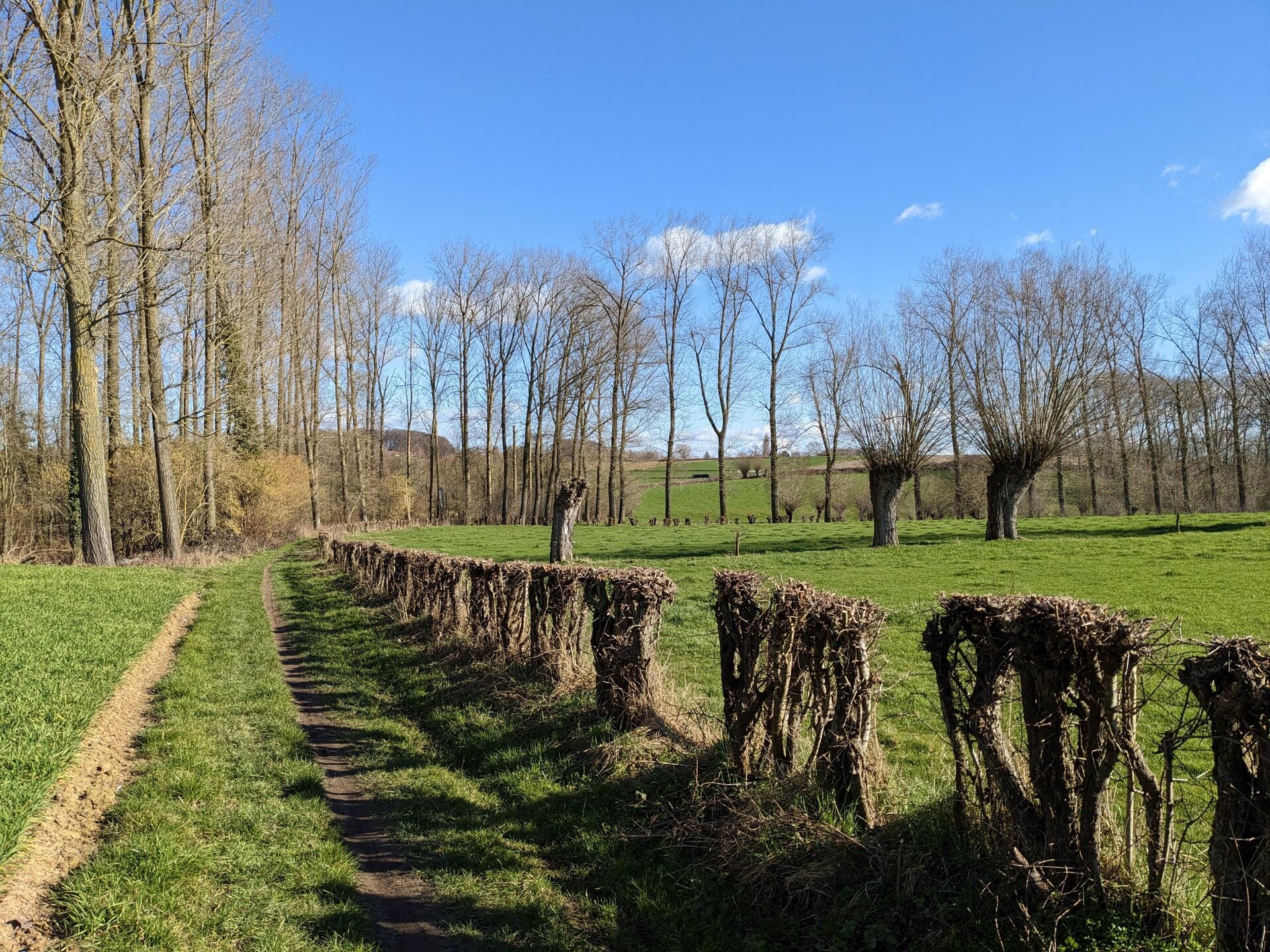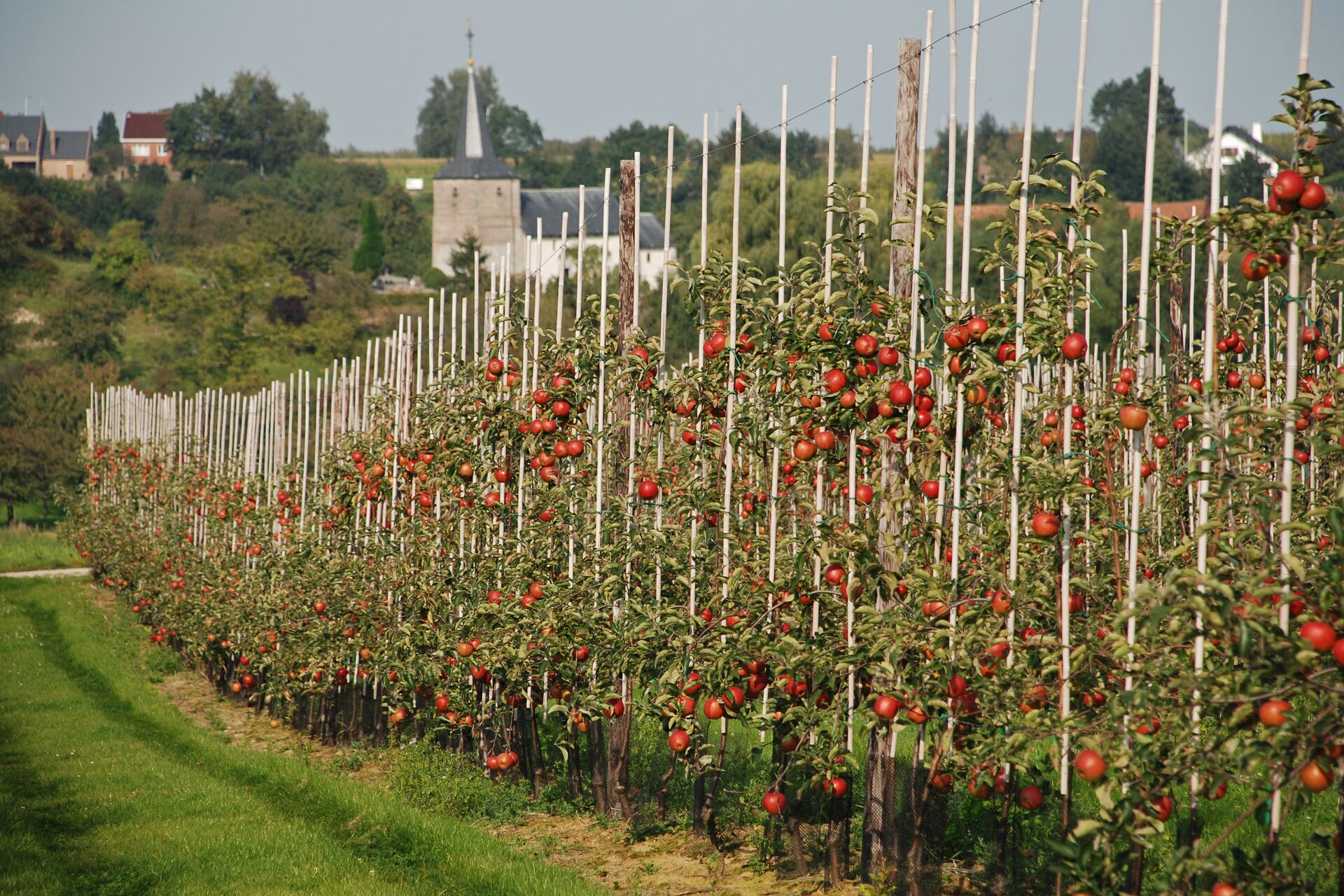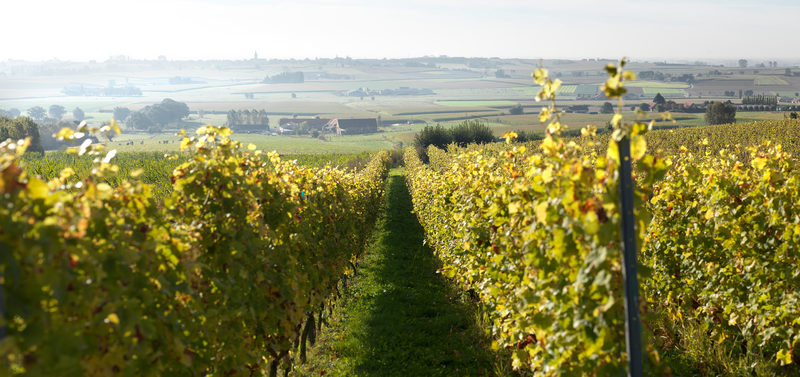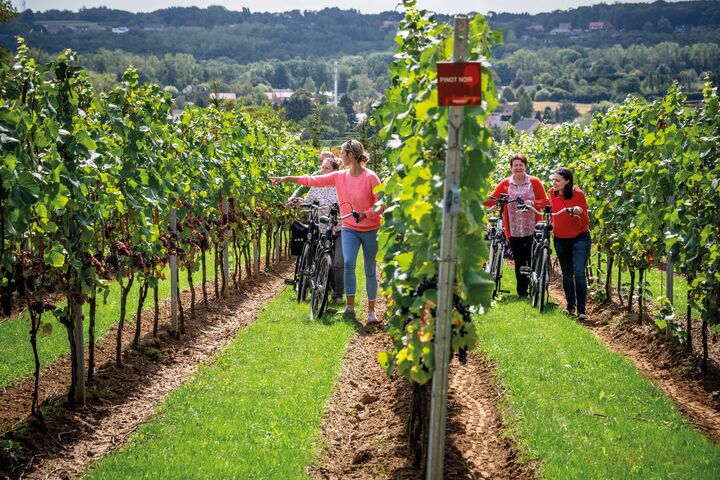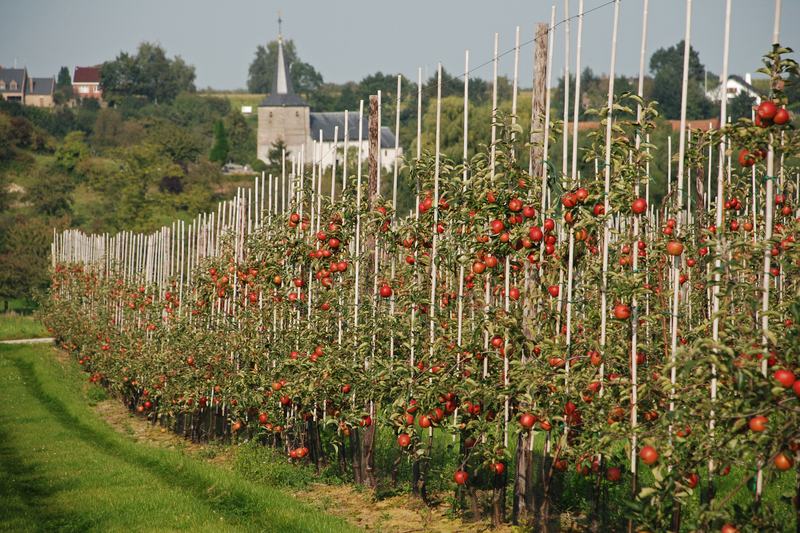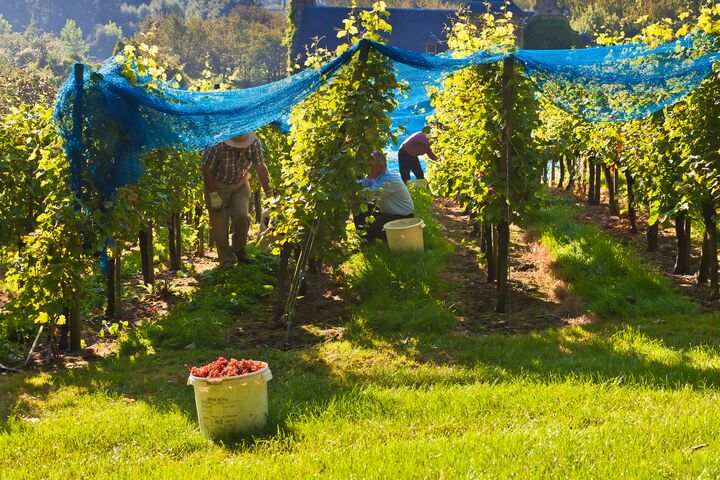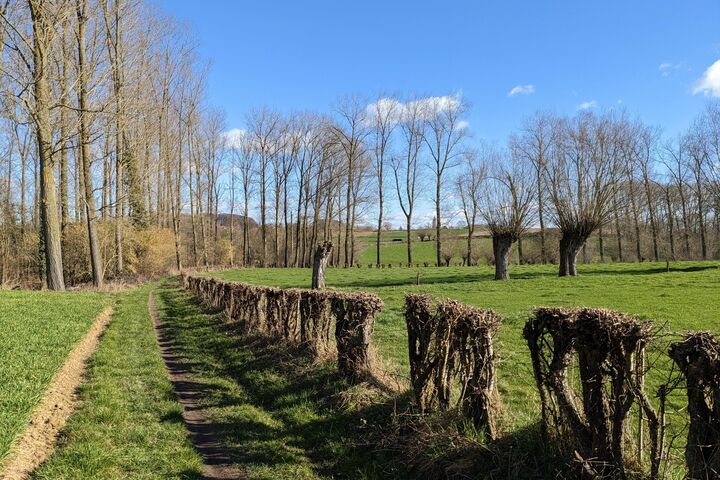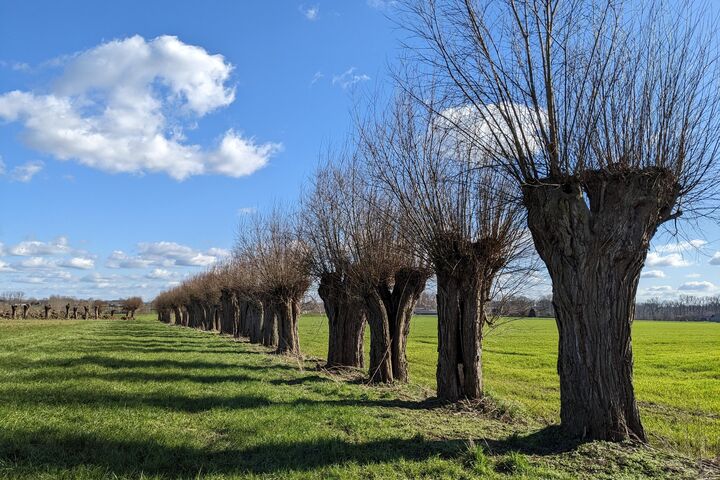The rolling landscape of Flanders is iconic. The eye-catching blossoms, idyllic vines, cherries, apples and pears all make it taste even sweeter. Flanders, a fruity delight for all the senses.
When you think of Flanders, people often think of heritage, dazzling art cities and a rich culinary culture. But that is not the whole story. Our wonderful nature is an added bonus with our lovely hilly landscape which is coloured by the fruit. In various regions, low-stemmed fruit trees in stately rows, or lush vines, add extra prestige to the view. In the spring, the white and pink blossoms throw a blanket over the treetops - delighting the eye. Once summer dawns, you can see the fruit beginning to take shape. Then comes the cherry picking. As the summer break enters its second half, it is the turn of the apples and pears. By late summer, the winegrowers have their moment and make their way through the vines. And so, all this juicy, sweet fruit leaves its mark on some of Flanders’ most beautiful regions. Discover them with us.
The Heuvelland
This picturesque hilly area around Ypres lies between the North Sea and the French border. The landscape is characterised by so-called witness hills such as the Kemmelberg and the Zwarteberg, silent observers of the past. They came about centuries ago through erosion and are thus a reminder of the landscape of bygone times. These hills, the influence of the North Sea and the ironstone soil make the Heuvelland a special grape region.
It is a joy to stroll among the vines of dozens of vineyards. You can discover them on foot, by bike or even from the air. A ride on the Cordoba cable car gives you a special bird’s eye view of the landscape. In good weather, you can see the North Sea looming over the hills. Or would you rather discover that beauty up close? The EDM route takes you along the vines of the well-known Entre-Deux-Monts wine domain, without the need to make a reservation and with no price tag, whenever you wish.
The Hageland
Further inland, to the east of the historic university city of Leuven, we find the Hageland. This too is a landscape with many inclines and warm ironstone soil. This climate is great for grapes, but also for cherries, apples and pears. The fruity industriousness gives the Hageland hills their characteristic appearance. This region is a wonderful place to unwind. In the spring months, the view is very moving when the white-pink blossoms seem to drape themselves over the landscape like a blanket. A trusty bicycle is an ideal companion with which to explore this landscape. For example, by cycling the Wine Landscapes Cycle Route. This beautiful route leads you via the stately castle of Horst past fields, meadows and vineyards.
Haspengouw
The Wine Landscapes Cycle Route takes you automatically to the next, possibly most well known, fruit region: Haspengouw. A piece of Flanders that tastes deliciously sweet. The apple, pear and cheery trees flourish on this hilly patch of land. The monumental fruit trees give the region a very special appearance. In the spring, it is seemingly covered by a blanket of beautiful blossoms. In the summer, the picking season begins: first the cherries, and then from the end of August also the apples and pears. From mid-September, the winemakers also get to work. Discover the fertile past of this region and stroll among the orchards in Tongeren, a city that already played an important role in the Low Countries over 2000 years ago. Those who prefer to discover Haspengouw by bike will find what they are looking for with a beautiful cycling loop along orchards, church villages, a former steam syrup factory and many other highlights.
Overijse
The charming spot of Overijse is the capital of Flanders’ grape-growing region. The past, present and future of the table grape are sacred here. This relationship began in the 1870s, when the first greenhouses were erected on the slopes of this region, especially on the south-facing hillsides where they were kissed fully by the sun. This created a special micro-climate, ideal for cultivating grapes. Today you can still find a few hundred of these “glass villages” in the region. The love for the grape is highlighted every year at the Grape Festivals, a five-day folklore festival. But the region’s fruity opulence can also be explored at other times of the year, on foot or on two wheels. For example, on the Huldenberg Grape Walk, that leads you through the region via the River IJse.
The Pajottenland
The fertile and hilly Pajottenland is a region with several hidden delights. For example, the so-called Tuscany of the Low Countries is the home of Pieter Bruegel. The Flemish Master found the area to be an inexhaustible source of inspiration for his paintings. The region is also the birthplace of the eternally vibrant and tangy Lambic and Gueuze beers. And then there is a wealth of fruit. The Pajottenland is also known for its typical tall fruit tree orchards. In charming Gooik, the Orchard walk passes by some eye-catching examples.
Five fruity trump cards, five beautiful regions. The eye-catching blossoms and irresistible flavours give our region a special cachet. Flanders, a sweet place to be enjoyed to the full.
